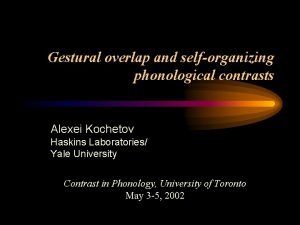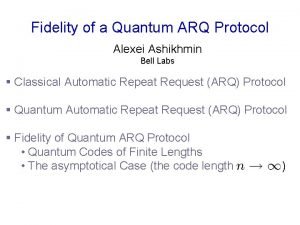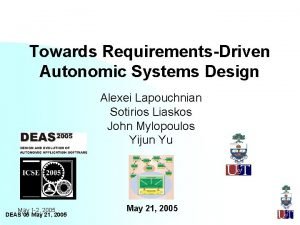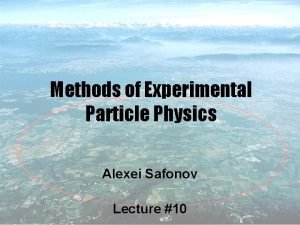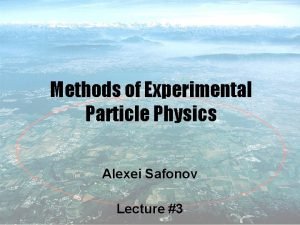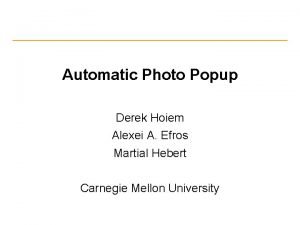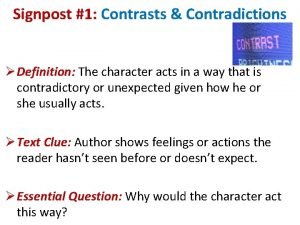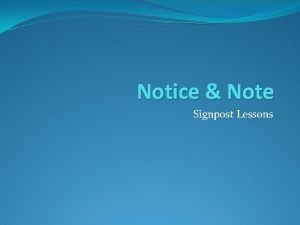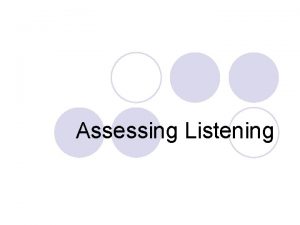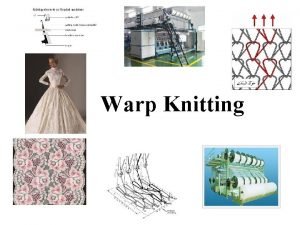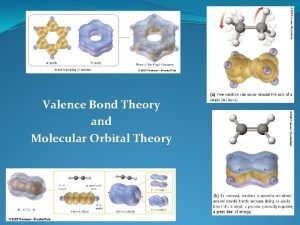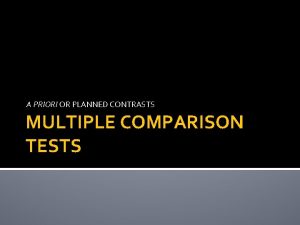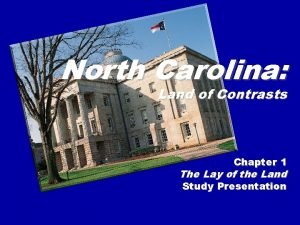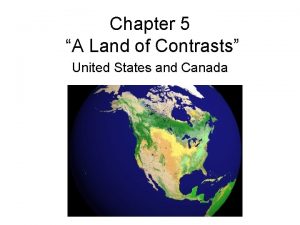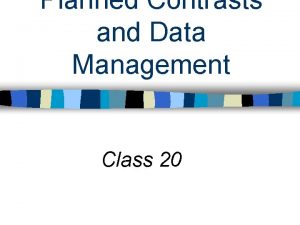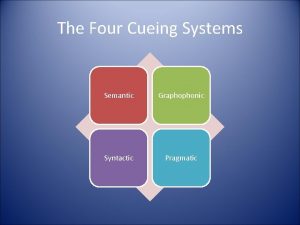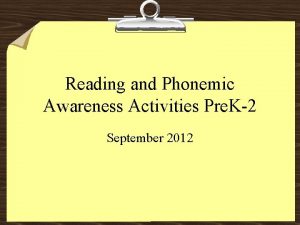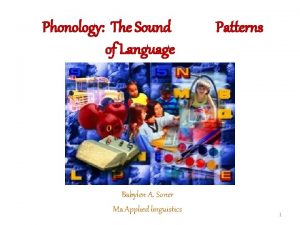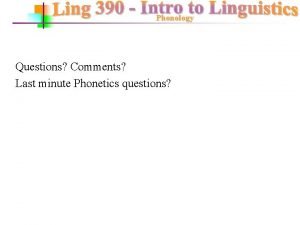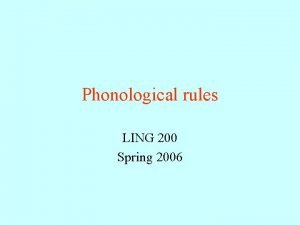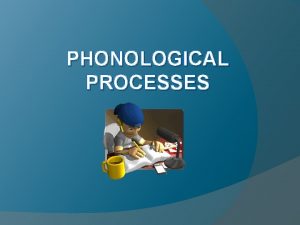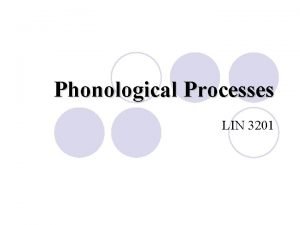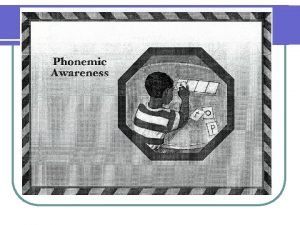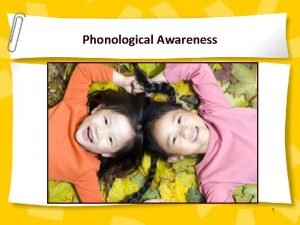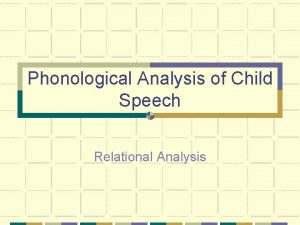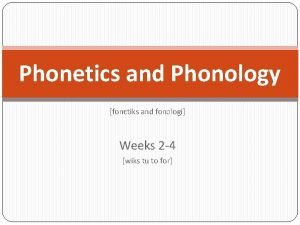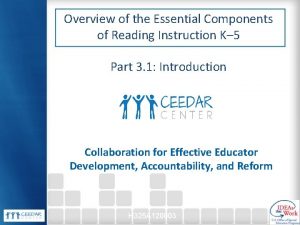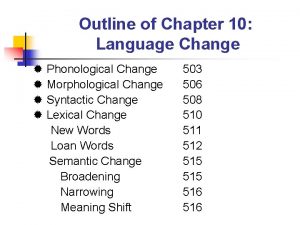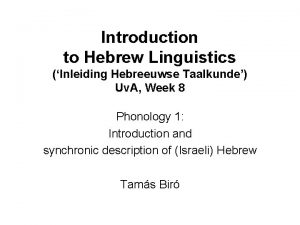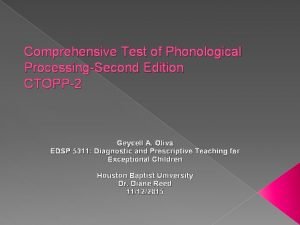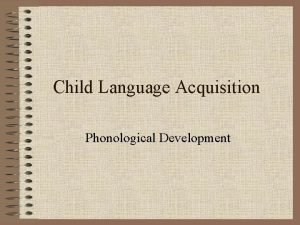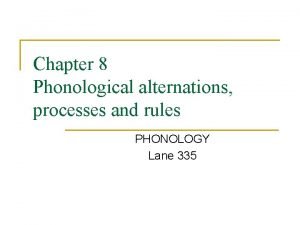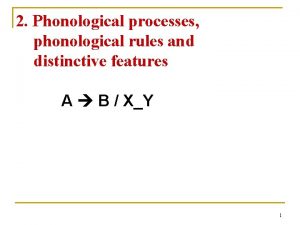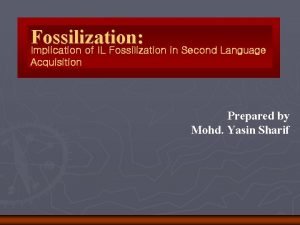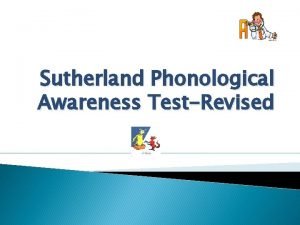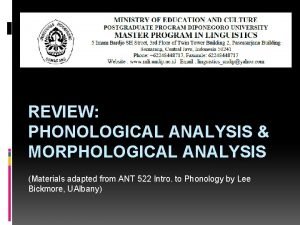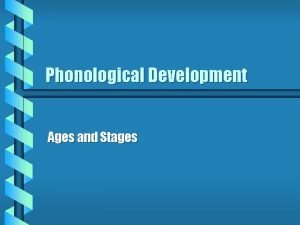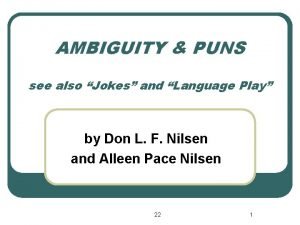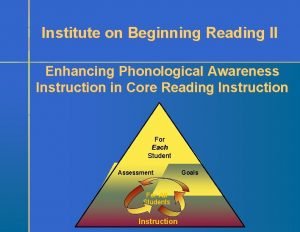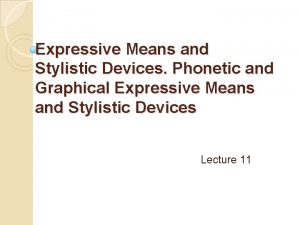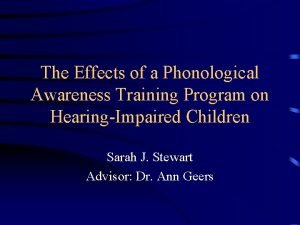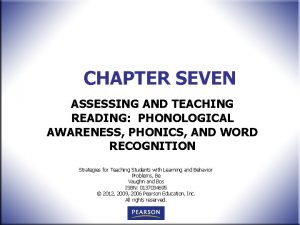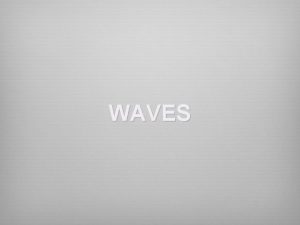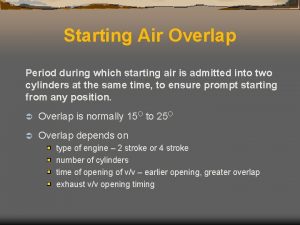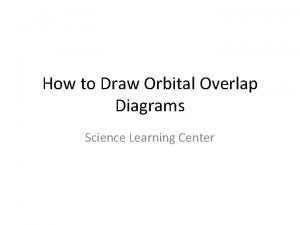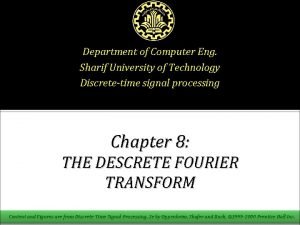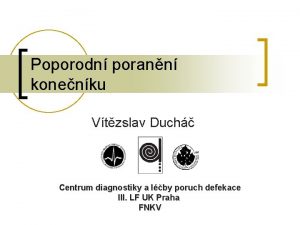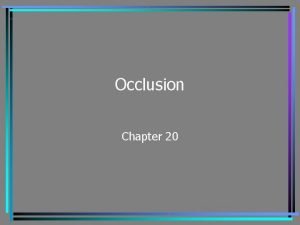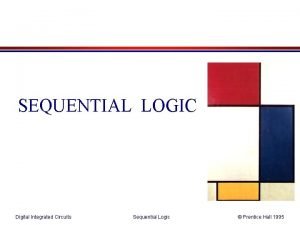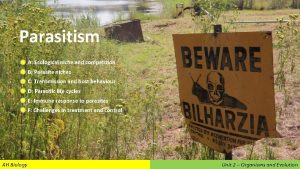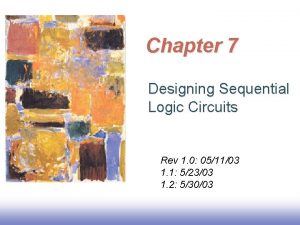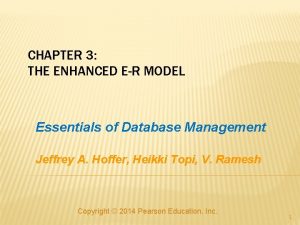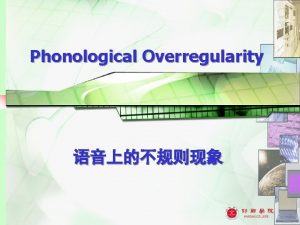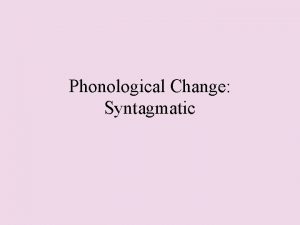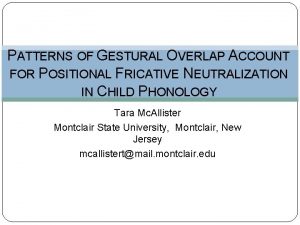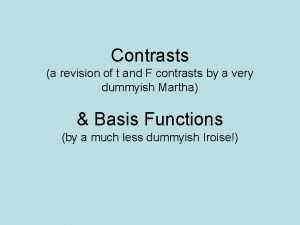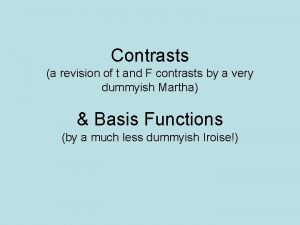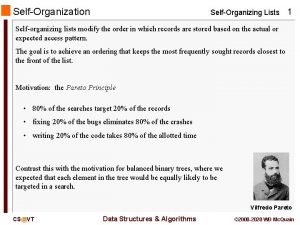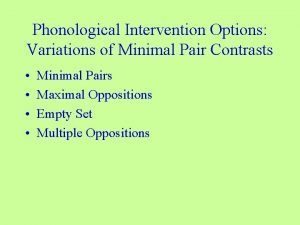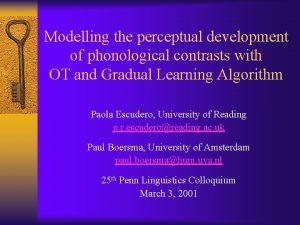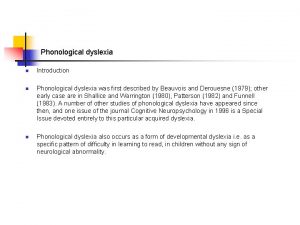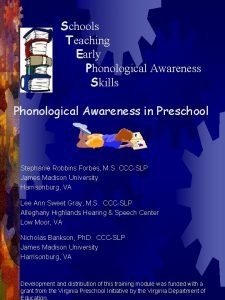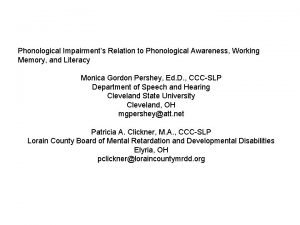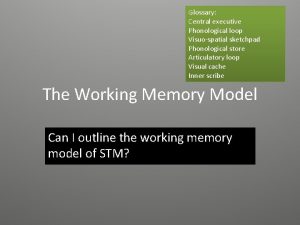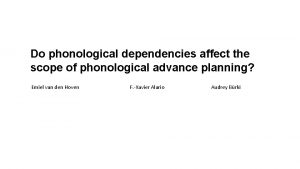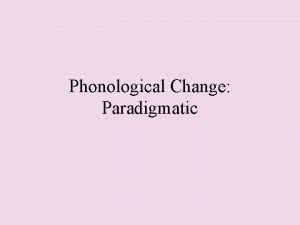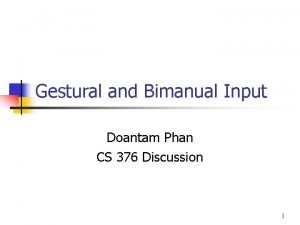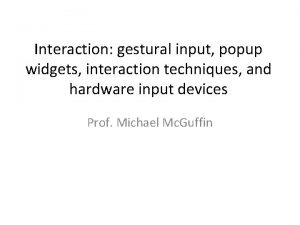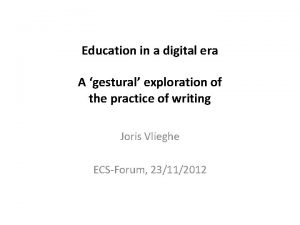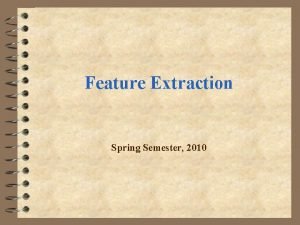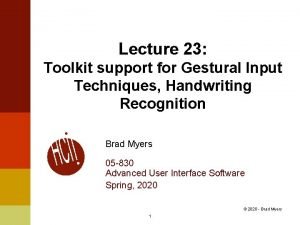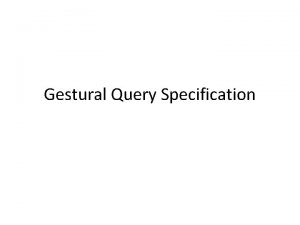Gestural overlap and selforganizing phonological contrasts Alexei Kochetov


































![Production • Rounding [1] Production • Rounding [1]](https://slidetodoc.com/presentation_image/8f125424532d3019085b97ef85bff2e2/image-35.jpg)
![Production • Rounding [0. 75] Production • Rounding [0. 75]](https://slidetodoc.com/presentation_image/8f125424532d3019085b97ef85bff2e2/image-36.jpg)
![Production • Rounding [0. 5] Production • Rounding [0. 5]](https://slidetodoc.com/presentation_image/8f125424532d3019085b97ef85bff2e2/image-37.jpg)
![Production • Rounding [0. 25] Production • Rounding [0. 25]](https://slidetodoc.com/presentation_image/8f125424532d3019085b97ef85bff2e2/image-38.jpg)
![Production • Rounding [0] Production • Rounding [0]](https://slidetodoc.com/presentation_image/8f125424532d3019085b97ef85bff2e2/image-39.jpg)































- Slides: 70

Gestural overlap and self-organizing phonological contrasts Alexei Kochetov Haskins Laboratories/ Yale University Contrast in Phonology, University of Toronto May 3 -5, 2002

Thanks to • The Project on Contrast in Phonology – SSHRC grants (410 -99 -1309 and 410 -96 -0842) to Elan Dresher and Keren Rice, University of Toronto – http: //www. chass. utoronto. ca/~contrast

Introduction • Restrictions on phonological contrasts – Backness and rounding in high vowels – Secondary articulations in consonants • Account: – These markedness effects emerge from lowlevel speaker-listener/learner interactions – The crucial role of production and perception of contrasts

Phonological contrasts • Focus: – Contrasts in high vowels • Front/back, rounded/unrounded • Inventories /i y u/, /i y u/, or /i u/ – Contrasts in consonant secondary articulations • Palatalized vs. non-palatalized: /C C( /w)/ • Labialized vs. non-labialized: /Cw C(w/ )/ • Velarized vs. non-velarized: /C C( )/

Observations • UPSID Database (Maddieson & Precoda 1990) – 451 languages

Observations • Languages with multiple vowel contrasts avoid distinctions in secondary consonant articulations – e. g. /y/ but */Cj/ (C = plosive; 2 exceptions)

Observations • Languages with distinctive secondary articulation contrasts tend to avoid multiple vowel contrasts, particularly distinctions in rounding/backness – e. g. /Cw/ but */y/ (C = plosive; 1 exception)

Observations • Inventories of languages of Northern and Eastern Europe – 37 languages (Celtic, Germanic, Baltic, Uralic and Turkic)

Observations Faroese Saami Icelandic Nenets Karelian Mari Mordva Chuvash Tatar Bashkir

Question • Why are these contrasts incompatible? ?

Explanation • Approach 1 – These markedness effects are pre-specified in Universal Grammar • Harmonic rankings of constraints (Optimality Theory; Prince & Smolensky 1993) • Phonological representations

Explanation • Approach 2 – These markedness effects arise due to lowerlevel factors -- limitations on production and perception – Work in phonology and phonetics: • Browman & Goldstein 1986, 2002; Ohala 1981; Hume & Johnson 2001, Pierrehumbert, Beckman, & Ladd 2001, among others • Cf. Jackendoff 2002 on markedness in general

Explanation • Approach 2 – These markedness effects arise due to lowerlevel factors -- limitations on production and perception – Work in phonology and phonetics: • Browman & Goldstein 1986, 2002; Ohala 1981; Hume & Johnson 2001, Pierrehumbert, Beckman, & Ladd 2001, among others • Cf. Jackendoff 2002 on markedness in general

Explanation • Approach 2 – Self-organization, or spontaneous emergence of order (see e. g. , Kauffman 1995) • dynamic systems • AI and ALife (see e. g. , Pfeifer & Scheier 2001)

Self-organization Simple local interaction Spontaneous emergence of order From www. swarm. org

Self-organization and phonology Phonological structure Speaker-listener interactions

Self-organization and phonology • Markedness effects • Unmarked: – stable with respect to production and/or perception, and/or higher-level processing – An equilibrium position • Marked: – unstable with respect to production, and/or perception, and/or higher-level processing – A non-equilibrium position

Simulation • Speaker-listener/learner interactions • Autonomous agents – Cf. Browman & Goldstein 1999, de Boer 2000, Lieberman 2000, Harrison, Dras & Kapicioglu 2002

A hypothetical language • Language X • Inventory: – {i y u} – {C C } • Lexicon: – C 1 VC 2 words, where C 1= C 2 – 16 items

Language X Lexical items

Speaker-listener interactions Agent A * From www. zabaware. com * Agent B

Speaker-listener interactions Agent A Agent B

Speaker-listener interactions Agent A Agent B

Speaker-listener interactions Agent A Agent B

Speaker-listener interactions Agent A Agent B

Speaker-listener interactions Agent A Agent B

Speaker-listener interactions Agent A Agent B

Speaker-listener interactions Agent A Agent B

Speaker-listener interactions Agent A Agent B

Speaker-listener interactions Agent A Agent B

Speaker-listener interactions Agent A Agent B

Speaker-listener interactions Agent A Agent B

Speaker-listener interactions Agent A Agent B

Production • Articulatory synthesizer (Maeda 1989, Vallée 1994) • Articulatory gestures (targets) • Vectors of numbers between 0 and 1 – Backness – Height – Rounding [0. . . 1]
![Production Rounding 1 Production • Rounding [1]](https://slidetodoc.com/presentation_image/8f125424532d3019085b97ef85bff2e2/image-35.jpg)
Production • Rounding [1]
![Production Rounding 0 75 Production • Rounding [0. 75]](https://slidetodoc.com/presentation_image/8f125424532d3019085b97ef85bff2e2/image-36.jpg)
Production • Rounding [0. 75]
![Production Rounding 0 5 Production • Rounding [0. 5]](https://slidetodoc.com/presentation_image/8f125424532d3019085b97ef85bff2e2/image-37.jpg)
Production • Rounding [0. 5]
![Production Rounding 0 25 Production • Rounding [0. 25]](https://slidetodoc.com/presentation_image/8f125424532d3019085b97ef85bff2e2/image-38.jpg)
Production • Rounding [0. 25]
![Production Rounding 0 Production • Rounding [0]](https://slidetodoc.com/presentation_image/8f125424532d3019085b97ef85bff2e2/image-39.jpg)
Production • Rounding [0]

Production • Vowels • • i Backness = [ 0 Height 1 Rounding 0 ]

Production • Vowels • Backness • y = [ 0 Height 1 Rounding 1 ]

Production • Consonants (secondary articulation) • Backness Height Rounding • C = [ 0 1 0 ]

Production • Consonants (secondary articulation) • Backness Height Rounding • C = [ 0 1 1 ]

Production • Words – Matrices of numbers between 0 and 1 e. g. , C u. C C 0 1 0 u 1 1 1 C 0 1 0

Production • Words: sequences of gestures overlapping in time C V C

Production: Gestural overlap • Gestures have conflicting targets • Physical limits on how well targets can be attained • An “undershoot” of at least one of the gestures (Lindblom 1963) • Stiffness (GEST, Computational gestural model; Browman & Goldstein 1990)

Production: Gestural overlap • Stiffness, k. C = 1, k. V = 1; • No reduction; physically impossible C V C

Production: Gestural overlap • Stiffness, k. C = 1, k. V = 0. 75 • Vowel gesture is reduced C V C

Production: Gestural overlap • Evidence: – In languages with secondary articulation vowels are strongly affected by the secondary articulation quality of neighboring consonants – Russian (Bolla 1981, Kochetov 2001) – Irish (Ó Dochartaigh 1992 ) – Marshallese (Choi 1992)

Production: Gestural overlap • Stiffness, k. C = 0. 75, k. V = 1 • Consonant gestures (secondary articulation) are reduced C V C

Production: Gestural overlap • Evidence: – In languages with multiple backness and rounding contrasts consonants are often allophonically palatalized and velarized/labialized – Turkic languages (Comrie 1981)

Simulation • Item: C u. C • Case 1: Vowel gesture is reduced – k. C = 1, k. V = 0. 5 • Case 2: Consonant gestures are reduced – k. C = 0. 5, k. V = 1

Case 1 • k. C = 1, k. V =. 5 • Input: C u. C • Output: C C or C y. C

Case 2 • k. C = 0. 5, k. V = 1 • Input: C u. C • Output: C u. C or C u. C

Case 1: Lexicon and grammar Agent A

Case 1: Lexicon and grammar Agent B

Case 1: Lexicon and grammar Agent B

Case 1: Lexicon and grammar Agent B

Case 1: Lexicon and grammar • Default grammar 1: – limited vowel contrasts (front vs. back) – multiple consonant contrasts in secondary articulation (restricted in distribution)

Case 2: Lexicon and grammar Agent A

Case 1: Lexicon and grammar Agent B

Case 2: Lexicon and grammar Agent B

Case 2: Lexicon and grammar Agent B

Lexicon and grammar • Default grammar 2: – multiple vowel contrasts (restricted in distribution) – limited consonant contrasts in secondary articulation (front vs. back) – consonants realizations are often close to neutral (non-palatalized, non-labialized, etc. )

Lexicon and grammar • Grammar 0: • Grammar 1: • Grammar 2: unstable more stable

Lexicon and grammar • Default grammar 3: – limited vowel contrasts – limited consonant contrasts in secondary articulation

Conclusion • The incompatibility of vowel and secondary articulation contrasts emerges through speaker-listener/learner interactions – Unstable (marked) Stable (unmarked) • No reference to pre-specified “knowledge” of markedness

Limitations • The simulation does not explain certain segmental markedness effects – e. g. – /y/ is more marked than /i/ / / is more marked than /u/ • Markedness is a by-product of multiple factors

Further directions • Implementation: additional factors – Other sequences, primary place of articulation – More realistic production and perception – More complex generalizations across the Lexicon and Grammar – Higher-level processing: morphological structure and alternations – Multiple agents: speakers/listeners • Other phonological contrasts

Further directions • Towards a better understanding of the phonological Grammar and markedness END
 Alexei kochetov
Alexei kochetov Alexei korb
Alexei korb Alexei ashikhmin
Alexei ashikhmin Chronpos
Chronpos Alexei lapouchnian
Alexei lapouchnian Alexei safonov
Alexei safonov Alexei safonov
Alexei safonov Alexei safonov
Alexei safonov Alex efros
Alex efros What does contrasts and contradictions mean
What does contrasts and contradictions mean Vampires prey on panama
Vampires prey on panama Contrasts and contradictions
Contrasts and contradictions Listening answer
Listening answer Warp knit
Warp knit Slidetodoc.com
Slidetodoc.com What is the overlap of data set 1 and data set 2?
What is the overlap of data set 1 and data set 2? What is ironic contrast
What is ironic contrast Planned comparisons
Planned comparisons North carolina land of contrasts
North carolina land of contrasts Chapter 5 a land of contrasts
Chapter 5 a land of contrasts Planned contrasts spss
Planned contrasts spss Types of ambiguity
Types of ambiguity Syntactic working system
Syntactic working system Central executive
Central executive Why is phonological awareness important
Why is phonological awareness important Phonological loop
Phonological loop Syllable structure diagram
Syllable structure diagram Onset coda nucleus
Onset coda nucleus Phonological rule examples
Phonological rule examples Coalescence phonological process
Coalescence phonological process Phonology process
Phonology process Phonological awareness
Phonological awareness Phonemic awareness continuum
Phonemic awareness continuum Independent analysis speech
Independent analysis speech Allophone
Allophone Phonological continuum
Phonological continuum Semantic change
Semantic change Proto semitic
Proto semitic Ctopp descriptive terms
Ctopp descriptive terms Phonological development in child language acquisition
Phonological development in child language acquisition Phonological alternation examples
Phonological alternation examples Dentalization phonological process
Dentalization phonological process What is fossilization in language
What is fossilization in language Sutherland phonological awareness test
Sutherland phonological awareness test Phonological analysis example
Phonological analysis example Phonological development stages
Phonological development stages Lexical ambiguity jokes
Lexical ambiguity jokes Phonological awareness skills from easiest to hardest
Phonological awareness skills from easiest to hardest Expressive means examples
Expressive means examples Phonological awareness training program
Phonological awareness training program Phonological awareness ppt
Phonological awareness ppt Natural classes phonology
Natural classes phonology What is letter sound relationship
What is letter sound relationship When waves overlap it is called
When waves overlap it is called Contoh strategi overlap produk
Contoh strategi overlap produk Starting air overlap
Starting air overlap Gotron papülü
Gotron papülü Seam welding process
Seam welding process How to draw orbital diagram
How to draw orbital diagram A model that shows how food chains overlap
A model that shows how food chains overlap Overlap save method
Overlap save method Monoplane teeth set
Monoplane teeth set Sutura overlap
Sutura overlap Class i occlusion
Class i occlusion Cold slug defect
Cold slug defect Which flip-flop is insensitive to clock overlap?
Which flip-flop is insensitive to clock overlap? Niche overlap
Niche overlap Which flip-flop is insensitive to clock overlap?
Which flip-flop is insensitive to clock overlap? Which flip flop is insensitive to clock overlap
Which flip flop is insensitive to clock overlap Subtype discriminator example
Subtype discriminator example Sailboat racing rules overlap
Sailboat racing rules overlap
